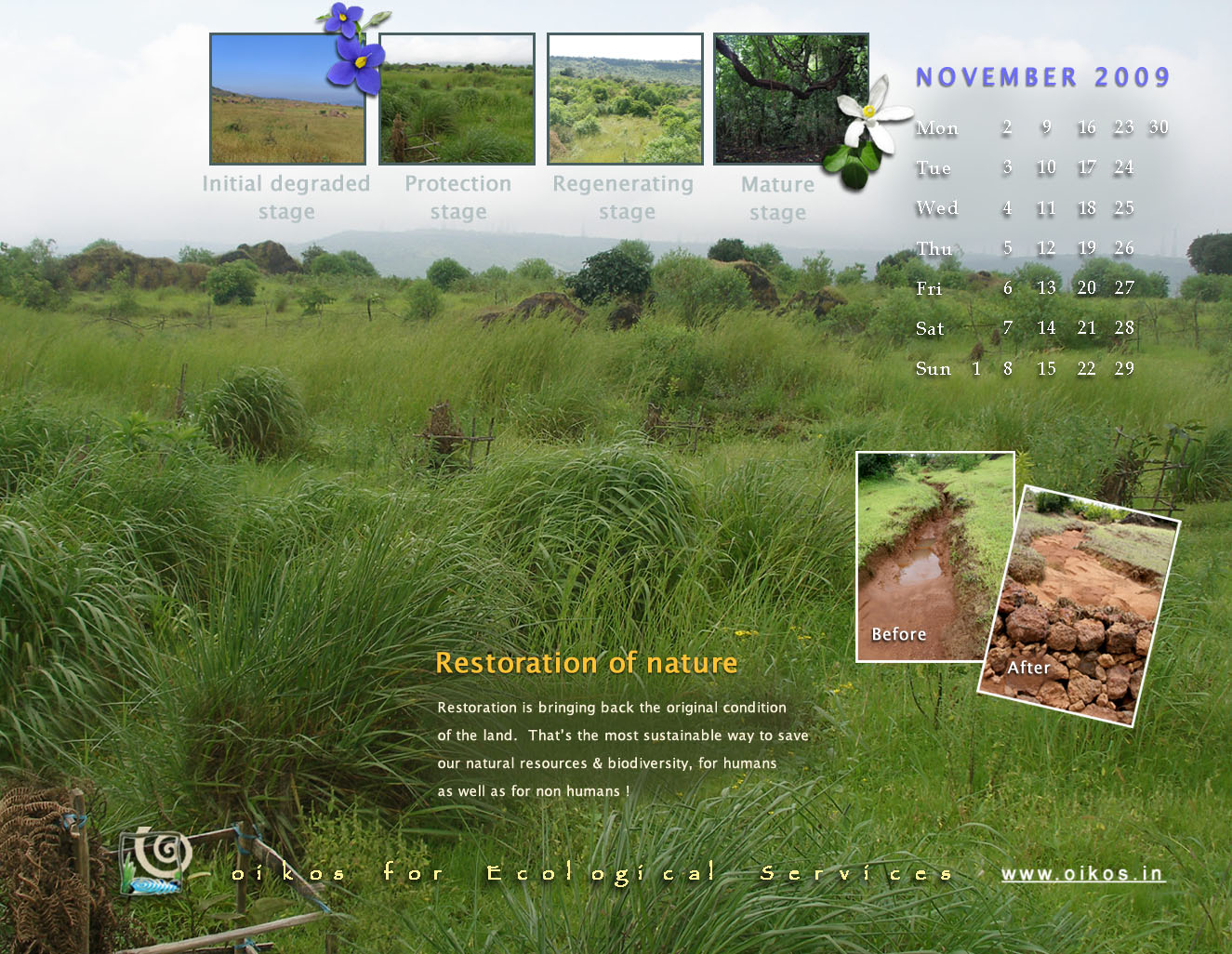Nov - 2009
| November - 2009 | |
| Dear Nature Lovers, | |
| There have been drastic changes in natural and countryside landscapes of our country during last few decades. We can see change in landuse, agriculture pattern, plantations, developmental activities that have caused a dramatic decrease in quality and quantity of natural resources, natural processes and biodiversity. "Restoration and conservation of natural resources" should be priority for long term sustainability… for humans as well as non humans. |
|
| Regards, Ketaki & Manasi. |
|
| Restoration and conservation of natural resources. It is seen that every major & minor ecosystem of our country is in degraded stage. There are pressures of cultivation, industry, expanding cities, increased resource needs, infrastructure projects and many more human activities. Needs of non human beings are totally neglected in this process. There is no provision to allocate resources to non human beings. (Prakash Gole, 2002) Like non-human beings, human health, be it individual or community or a village or city, is dependent on healthy surrounding, i.e. healthy ecosystems. The most sustainable way to enrich our lives is to restore nature back to its near original stage. Restoration is the key to allocate resources to non humans as well as to sustain resources for humans. It is about bringing back the pristine primary stage of the land. All our natural areas are under various degrees of degradation. All these stages can be restored back to original & appropriate vegetation cover as per climatic regime. E.g. A grassland in high rainfall areas of Western Ghats can be restored to semi-evergreen forest, which should have been there (See desktop image) while a scrubby patch in semi arid plain regions can be restored to savannah or dry deciduous forest cover… Generally, restoration can be accomplished with four successional stages. First stage could be totally "barren", with rocky outcrops, with very less poor soil and grasses which is the starting point. Once this site is "protected" from grazing and cutting "biomass accumulation" starts, mainly in the form of grasses and herbs. This adds organic matter to soil & increases soil moisture. Efforts towards increased water percolation & ground water recharge taken in this stage will provide sustainable source of water for future use. With various restoration techniques (as mentioned in earlier calendars), this stage can be made productive and slowly it reaches third stage of "regeneration". Shrub clusters play important role here as anchoring places & we can also assist the land by plantation activity. Once this stage is achieved biodiversity value of the land increases. Again with little acceleration, mature stage of ecosystem can be achieved over the years. This process of restoration can be implemented singly or with other activities. The land, be small as an acre or very large as thousands of acres, it needs care. True essence of restoration is to satisfy people’s needs along with that of non human beings ! Ultimately land dwellers will get the benefit in a long run. |
Click on any of the desired options below to get appropriate image.
Save it to computer and set it as desktop background for your computer monitor.
Oikos for ecological services
Ph. 020-25451875
Web: www.oikos.in


